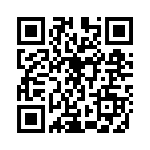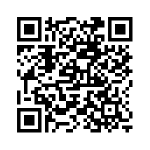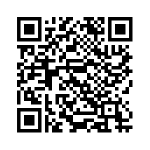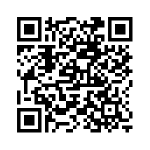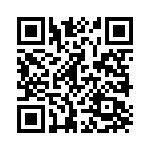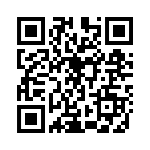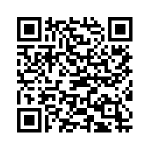41 Hemming Techniques
Sheri Deaton
Hemming Techniques
Her, Hem?
You may be asking yourself, could I hem a garment? Could she hem the curtains or fix the bottom of a skirt? The answer to this question is YES! Yes, you can!
Hemming a garment, or home furnishing such as curtains can seem like a daunting task. Having the appropriate tools for the task at hand, the time to complete the project, and the skills needed to accurately measure and mark the hemline is essential. Once you have gathered the supplies needed, simply follow directions and measure appropriately to ensure an even hem on the project you are creating or altering (Deaton, 2021).

Supplies Needed
The following small equipment supplies are commonly used when hemming. They will not be used on every project but are important to have access to if you need them for the hemming required for the project at hand.
- Seam gauge, wide ruler, or measuring tape
- Chalk or fabric pencil
- Pin cushion with pins
- Shears or scissors
- Iron
- Hand sewing: needle and thread
- Machine sewing: matching thread
- Adhesive hem: hemming tape
NOTE: Some hems are completed on the sewing machine, while others can be accomplished with hand stitching. Even still, some projects can be completed with the help of hemming tape, a very useful invention! Only use supplies required for the specific type of hem you are using, and always follow the manufacturer’s suggestions regarding the application of heat through ironing or pressing.

Generic Guidelines
The following steps are general strategies for hemming any garment or home furnishing. Check out the resources linked at the end of this chapter to see tutorial videos and step-by-step directions for specific types of hems. Additionally, hand-sewing hemming techniques are more clearly outlined in this text in Unit 5 Hand Sewing in the chapter “Hemming Stitch.”
Step 1: Determine where the hem needs to be.
- If you are adjusting the length of curtains, hang the curtains at the appropriate height on the wall to determine where you want the curtains to land on the wall, or how close you would like for them to land to the floor.
- If you are adjusting the length of a skirt, dress, trousers, or pants, you may need to enlist the help of a friend or use a mirror. Stand up straight on a flat surface and note where the hem needs to be adjusted. Mark this in an appropriate way, which could include placing a pin in the fabric or a safety pin.
Step 2: Mark the hemline on the inside or the wrong side of the garment.
- Turn the garment inside out, or turn the home furnishing to the wrong side and mark the hemline.
- Lay the item on a flat surface and smooth out the surface.
- Use the appropriate measuring tool (seam gauge, wide ruler, or measuring tape) and use the appropriate marking tools (chalk, fabric markers, etc.) to mark the hemline evenly.
Step 3: Mark another line below the hemline to indicate the cutting line.
- For some projects, this step is not necessary because you are not cutting off material, instead, you are creating a small hem (1″) to increase the fit or to adjust the length.
- If you are making a substantial change in the length of the garment or home furnishing item, cut off the excess material. The general rule of thumb is to leave 2″ of fabric below the hemline to create a 1″ hem.
Step 4: Cut the excess fabric off.
- Use sharp shears or scissors to ensure an even cut.
- Take your time! You got this!
Step 5: Determine the type of hem you need to complete.
- Read the directions on the pattern envelope and follow the guidelines suggested by the manufacturer.
- If you are completing a hem using hemming tape, check out this tutorial: How to use hemming tape. Hemming tape is an excellent tool to use for those new to sewing or for those who are limited on time.
- If you are hemming an item by hand, check out this tutorial: How to hem a dress by hand. Regardless of the project you are completing, this step-by-step tutorial is an excellent way to see how to accomplish each step.
- If you are going to sew your hem, the blind hemming technique is highly revered for its durability and lack of visibility. Check out this tutorial on How to sew a blind hem.
- Additional resources are posted at the end of this chapter, including how to make a double-fold hem and how to use a rolled hem or hemmer foot on the sewing machine.
TIP: Create opportunities for students to explore multiple hemming techniques. While teaching hand sewing to students, reinforce the importance of consistent stitches that are evenly spaced. Short evenly spaced stitches will create a strong hem which is more likely to retain its strength even through launder and wear. Show students how to use hemming tape, and practice ironing safely while demonstrating these skills. Discuss the cost of hemming tape and the trade-off between time spent hemming and money spent on a tool to assist and speed up the process.
Hemming it Up
The hem helps secure the bottom of the garment or project. A quality hem is even, does not show through on the other side of the garment (unless that is part of the design), and secures the ends of the fabric so that they do not fray when laundered.
Inevitably, a hem is going to come out of a garment or a hem will need to be adjusted due to variations in height. Knowing how to complete a hem is a powerful tool to put in your proverbial sewing tool belt. You can do this!

Resources
References
Deaton, S. (2021). Teaching Apparel Production. Presentation.


